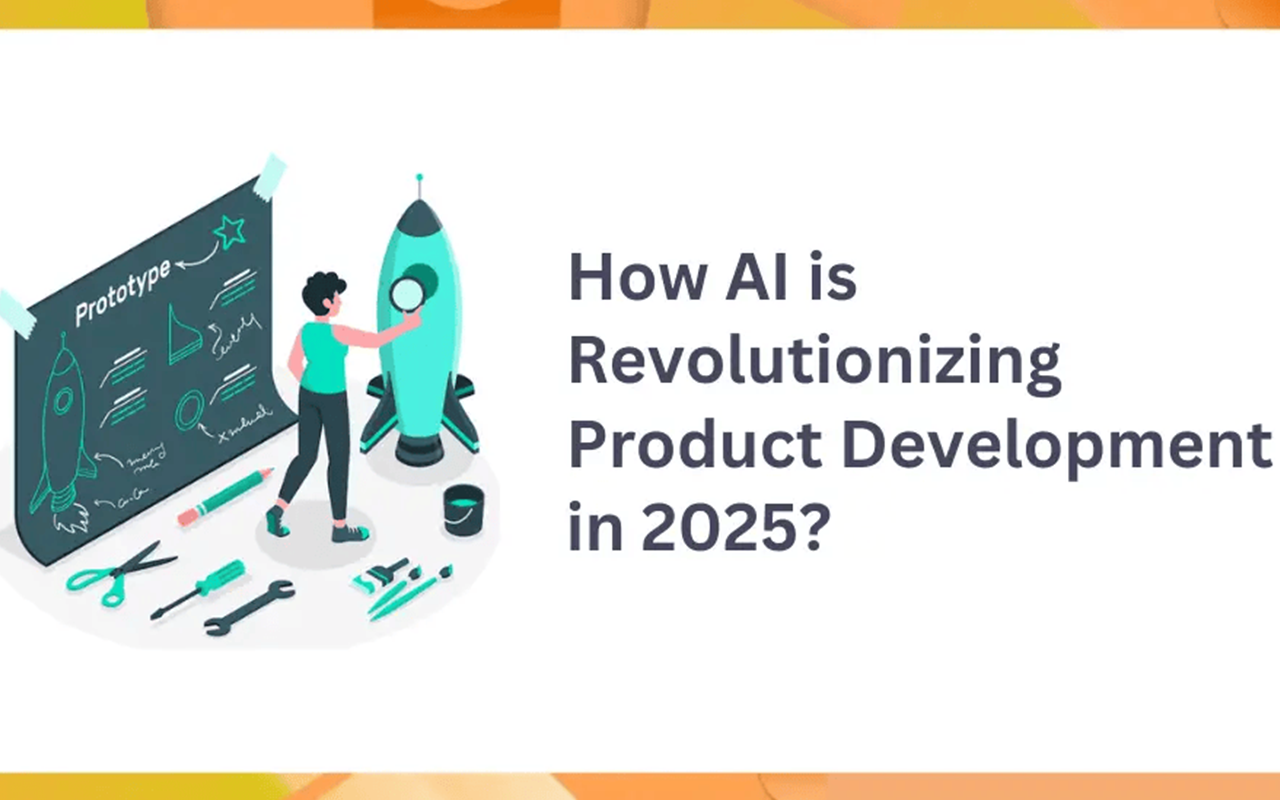Last updated : 28 July, 2025
In a world where speed, precision, and innovation determine success, product development is undergoing a radical transformation—and at the center of it all is Artificial Intelligence (AI). What used to take teams months to prototype, test, and iterate can now be accomplished in days or even hours with the help of AI-powered tools.
But this revolution isn't just about working faster. It's about working smarter. AI is changing the how and why behind product creation, unlocking insights, automating repetitive tasks, and even inspiring new ideas that were previously out of reach.
In this blog, we’ll explore how AI is reshaping every stage of product development—from ideation to launch—and why embracing it isn’t just an advantage anymore, but a necessity.
1. AI in Ideation: Turning Data into Ideas
The earliest stage of product development—coming up with a great idea—has traditionally been fueled by creativity, customer feedback, and market research. But AI is now becoming a co-pilot in this creative process.
AI tools can analyze large volumes of customer reviews, competitor products, and social trends to uncover unmet needs or emerging patterns. For example, natural language processing (NLP) models can sift through millions of online conversations to identify pain points or desires users aren’t explicitly stating.
This kind of data-driven inspiration allows product teams to generate smarter ideas backed by real demand, not just intuition.
💡 Real-World Use Case: Consumer brands like LEGO use AI to track user-generated content and feedback, helping identify what kinds of new sets will resonate most with fans.
2. Accelerating Design and Prototyping
Designing a product often involves countless sketches, 3D models, and iterations. AI is turbocharging this phase through generative design—an approach where algorithms explore all possible design combinations based on given constraints (like materials, budget, and functionality).
Tools like Autodesk’s Fusion 360 can generate multiple design options in minutes, allowing designers to explore more ideas, faster. AI can even simulate how a product will perform under stress, heat, or usage conditions, saving time and money on physical prototypes.
This allows teams to make informed design decisions early, reducing the need for expensive trial and error later in the process.
3. Predicting What Customers Really Want
Understanding customer needs is always a challenge—but AI makes it easier and more accurate.
By analyzing purchase history, behavior patterns, and user feedback, AI can predict which features will matter most to customers and which ones are likely to fall flat. It can even help segment audiences and tailor features to specific user personas.
Instead of relying solely on surveys or gut feelings, companies can make data-backed decisions about what to build, what to cut, and how to prioritize the product roadmap.
🔍 Example: Spotify uses AI to personalize playlist recommendations—but that same technology also informs product teams about listener preferences, helping shape future app features.
4. Smarter Testing and Quality Assurance
Product testing used to mean laborious rounds of QA and debugging. With AI, this process is becoming much more efficient.
AI-powered testing tools can automatically detect bugs, simulate user behavior, and run stress tests at scale. These systems don’t just identify what went wrong—they also suggest likely causes and potential fixes.
In software development, AI is helping teams run continuous testing in CI/CD pipelines, ensuring that issues are caught earlier in the cycle and reducing time to deployment.
5. AI-Driven Project Management and Collaboration
Managing a product development lifecycle often requires juggling deadlines, stakeholders, and resource constraints. AI tools like Notion AI, Jira AI, or ClickUp’s smart assistants are stepping in to automate task prioritization, identify project blockers, and even recommend adjustments to timelines.
Natural language processing helps teams analyze meeting notes, emails, and feedback, turning them into actionable insights. It’s like having a virtual project manager that never sleeps.
6. Personalized User Experience & Post-Launch Optimization
Once a product launches, the work isn’t done. In fact, this is where AI can shine even more—by personalizing the user experience and driving continuous improvement.
AI algorithms can monitor how users interact with the product in real time, adjusting content, recommendations, and layouts to suit individual preferences. Meanwhile, analytics engines powered by machine learning can surface insights on how to improve the product in future updates.
This post-launch feedback loop is tighter and more responsive than ever before.
🎯 Example: Netflix continuously analyzes viewer behavior to not only recommend content, but also to fine-tune its UI/UX and identify which features users actually engage with.
7. The Rise of AI Co-Creation
Perhaps the most exciting frontier in product development is the idea of co-creation with AI. Instead of just using AI as a tool, developers and designers are increasingly collaborating with AI systems to ideate, iterate, and evolve their products.
We’re seeing AI participate in naming products, writing product copy, suggesting UX changes, or even composing audio for digital experiences. It's no longer just about speeding things up—AI is actively participating in the creative process.
Final Thoughts
AI is no longer just a buzzword in product development—it’s a game-changer. From brainstorming and prototyping to testing and optimization, AI is making product teams faster, more informed, and more creative.
But here’s the catch: the companies that benefit the most from AI aren’t just using it for automation—they’re rethinking how they build altogether. They’re blending human ingenuity with machine intelligence to create products that are smarter, more personalized, and better aligned with user needs.
In short, AI isn’t replacing product teams. It’s empowering them. And the future of product development belongs to those who are ready to build with AI—not just around it.

